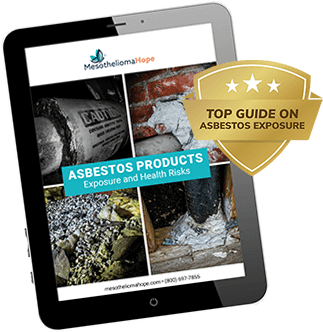Asbestos in Plaster Explained
Various forms of plaster have been around for thousands of years, used in building construction, artistry, and even medical applications. Plaster starts as a pasty substance that’s made from minerals and water and dries into a sturdy, solid form.
The three most common types of plaster today include:
- Cement
- Gypsum/Plaster of Paris
- Lime
Until the mid-1980s, asbestos was commonly added to plaster. It was an inexpensive way to increase the plaster’s ability to insulate buildings and resist fire.
Asbestos continued to make its way into some types of plaster through cross-contamination despite its known danger.
Vermiculite is frequently mixed with cement plaster to create mortar, and some vermiculite mines also contain asbestos. The most famous vermiculite mine is Montana’s Libby Mine, which was a major global supplier of vermiculite until its closure in 1990 amidst massive litigation.
Although miners and plaster manufacturers are more aware of asbestos contamination in mines today, it’s not clear whether all current vermiculite mines across the globe are asbestos-free. Therefore, it’s possible that cross-contamination may continue to this day.
Who Was Exposed to Asbestos in Plaster?
Plaster was a popular material across many fields, including construction work, medical applications, and the arts.
Fire-rated walls were one of the most common uses for asbestos plaster, as these had exceptional fireproof qualities. Acoustic ceilings and walls were another common use for asbestos plaster.
The following companies are known to have created asbestos-containing plaster products:
- Bestwall Gypsum
- Certainteed
- Georgia-Pacific
- Kaiser Gypsum
- Keene
- National Gypsum
- Synkoloid
- United States Gypsum
- W.R. Grace
Anyone who worked with or near asbestos plaster may have been exposed and is at risk of developing mesothelioma.
How Exposure To Asbestos In Plaster Occurs
When plaster with asbestos is disturbed, asbestos particles may become airborne and can be inhaled.
People who routinely mixed powders into plaster when asbestos was a common ingredient are at the highest risk of developing asbestos-related diseases like mesothelioma.
Today, people who are renovating or working on homes that have asbestos-containing plaster are also at risk. As plaster ages, it weakens and can break or crumble, releasing dangerous asbestos particles into the air.
If you are working on a home that may contain asbestos in plaster or any other construction materials, it’s critical that you protect yourself with proper ventilation masks.
Health Risks Of Asbestos In Plaster
Asbestos in plaster has been linked to several serious health conditions, including mesothelioma.
Mesothelioma is a deadly form of cancer that develops after asbestos particles become trapped in the body’s natural lining and triggers a mutation in the nearby cells. Over time, these mutated cancer cells spread.
Mesothelioma is challenging to diagnose in its early stages and can develop for several decades before presenting any symptoms.
Unfortunately, the symptoms of mesothelioma do not become apparent until the later stages of the disease. Stage 3 and 4 mesothelioma cells are difficult to destroy and the survival rate for patients diagnosed with mesothelioma is often less than five years.
Asbestos exposure has also brings on other diseases, including asbestosis. With asbestosis, asbestos particles cause scarring and damage to the lung tissues, which makes it hard for the lungs to function properly.
The health risks associated with asbestos are severe. Therefore, people who were routinely exposed to asbestos plaster at any point in their career should be vigilant with their health check-ups and notify health care professionals that asbestos exposure occurred.
Seeking Justice For Mesothelioma Due To Asbestos Exposure
Mesothelioma is a deadly disease that has serious impacts on a person’s health and wellness, frequently resulting in loss of life.
Even after manufacturers knew the dangers of asbestos, some continued to add asbestos to their plaster products, endangering the lives of hardworking Americans and their families.
If you have mesothelioma, you may be entitled to compensation for this negligence. Contact the advocates at Mesothelioma Hope to learn more.



